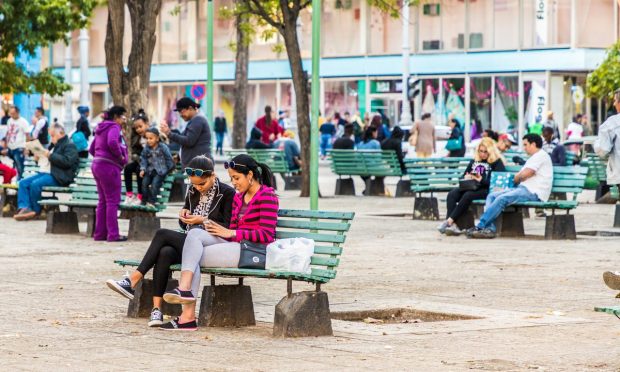Rising Smartphone, Digital Service Usage Drives Adoption of Non-Cash Payments in Latin America

Cash use is so prevalent in many Latin American markets that consumers actually go out of their way to use it to make a payment or complete other online transactions that most people would do from their phones.
As Sebastián Castro Galnares, co-founder at Kushki, told PYMNTS, it’s not uncommon for people to walk or drive to a nearby supermarket, pharmacy or convenience store – with cash in hand – to pay a bill or make a purchase. It’s a friction-filled process that is the absolute antithesis of seamless, one-touch shopping.
The silver lining is that this extra step has actually made it easier for merchants in the region to start digitizing by accepting cash as a payment method upon checkout, Galnares told PYMNTS in an Oct. 1 interview.
“It’s been super interesting for payment companies like us to leverage [what are] essentially cash networks to extend it to merchants online, but also for merchants to adopt as a relatively simple way to begin digitizing and sort of use it as a bridge,” Galnares said, adding that it has helped familiarize consumers with other payment methods, too.
Cash Used in Transactions
With the firm’s offices in locations ranging from New York to Santiago, Chile, Kushki – which means “cash” in an Ecuadorian-Quechua dialect – has a wide view of the Latin American digital payments market.
Throughout the region, a very large percentage of transactions are done with cash, while the share that is digitized is very tiny – even in the single digits. “There’s still a lot of relatively low-hanging fruit out there that folks in the payment space can certainly capitalize on,” Galnares noted.
Although he estimates that only low single-digit percentages of payments made by both merchants and consumers are digitized, that has begun to change. The pandemic accelerated the adoption of digital payments, and that in turn changed the business models in many markets.
A 360-Degree Enabler
“Merchants that probably would have taken years to adopt online payments had to accelerate their plans drastically, and that’s here to stay,” Galnares said.
When merchants do consider starting to digitize, many ask first about pricing. Galnares said that while pricing is important, there’s much more to payments than that. Digital payments and payments technology also translate into how to control fraud, increase acceptance rates and boost customer conversion.
“It’s really been interesting to see that merchants are now understanding the potential for payments technology to be a 360-degree enabler, and not just ‘what am I being charged for payments processing?’” he noted.
Wholehearted Adoption of Digital Services
Looking ahead to the next 12 to 24 months, Galnares believes the adoption will not slow down. People will continue to adopt new technologies more wholeheartedly, he predicted, just as they’re now using Uber for transportation and Uber Eats for food delivery.
“The pandemic has made it much easier for folks to adopt digital services, which on the back end are tied into digital payments,” Galnares said. “It’s also really interesting that a lot of consumers are being exposed to digital payments for the first time, not only in the sort of stereotypical situation of ‘I went into an online eCommerce store and bought something,’ but also in these fundamental functions of life that have made their way into people’s smartphones.”
A Part of Daily Life
Latin America has one of the highest percentages of smartphone penetration in the world, which has made it easier for people to digitize their transactions.
Regarding El Salvador’s cryptocurrency experiment, Galnares believes the world will go that direction in time. Just as smartphones became part of daily life, cryptocurrency will, too.
“It’s not a question of if it will happen, it’s more a question of when,” he said.
Similarly, Galnares added, “I think one day, all payments will be de-facto on smartphones, enabled by biometrics, and will be seamless and widely adopted everywhere.”